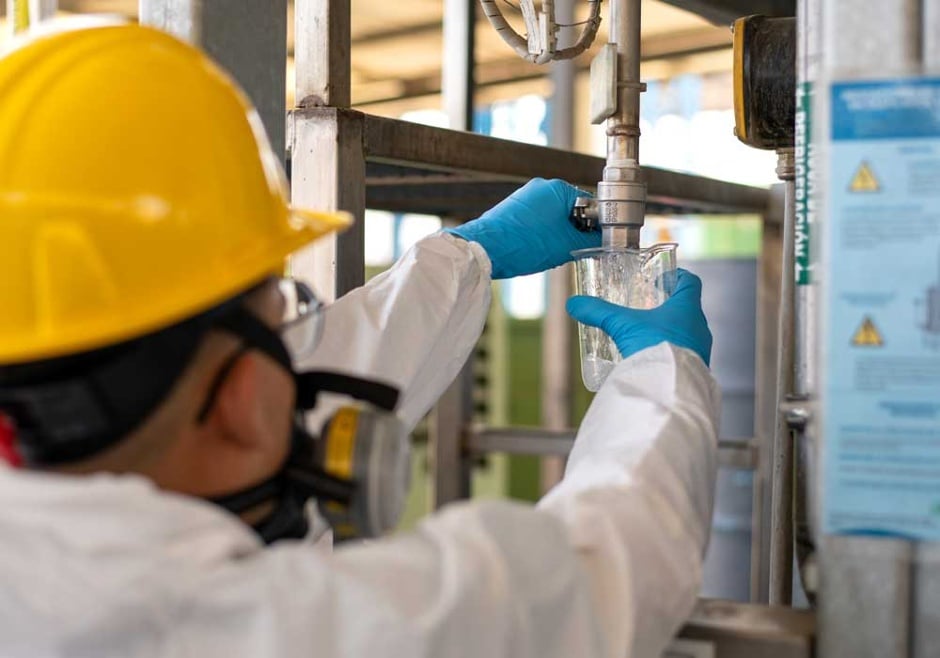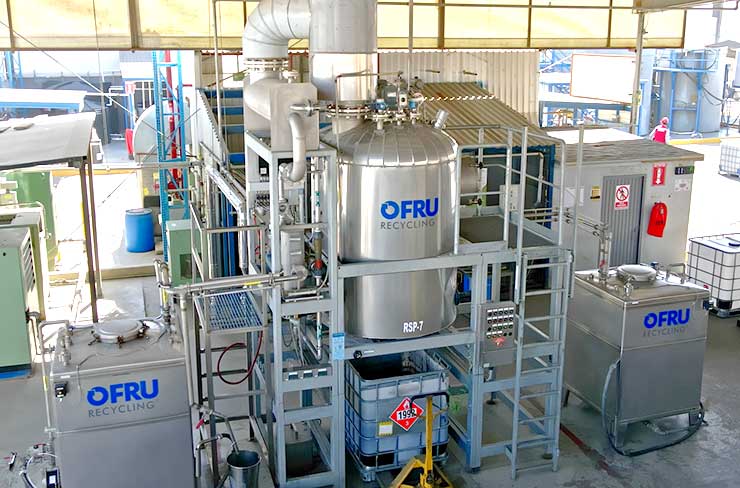Solvent Reclamation And The Charge Toward Zero Waste
Solvent distillation stands out as a key technique in reclaiming valuable solvents and minimizing environmental impact.

In manufacturing, efficiency isn’t just about maximizing production. It’s also about minimizing waste.
Solvent recovery offers facilities that generate solvent waste the opportunity to minimize their environmental impact while reducing disposal costs.
Let’s examine how a solvent recovery system works and how the process ultimately reduces the waste generated at your manufacturing facility.
Solvent distillation is a valuable tool for recovering solvents. This process allows for the recovery and reuse of solvents, ultimately reducing waste and lowering operating costs.
solvents, ultimately reducing waste and lowering operating costs.
What happens during the solvent distillation process? During solvent distillation, a liquid or vapor mixture of two or more substances is separated into component fractions of desired purity. The solvent distillation process separates the solvents from other substances through the application of heat.
The basic principle behind solvent distillation is to heat a liquid mixture containing solvents, causing the solvent to vaporize. The vapor is then condensed back into a liquid form, resulting in the separation and recovery of the solvent.
There are typically four stages to this process:
There are four general steps in the solvent distillation process:
During the heating process, the liquid mixture of the solvent and other components is heated to increase the temperature of the solvent. Heat is important to drive the separation process by providing the energy needed to vaporize the solvent. The specific temperatures and conditions present during solvent distillation can vary based on the solvents' properties and the separated substances.
During the vaporization process, the solvent undergoes a phase change from liquid to vapor due to the rising temperatures. This leaves behind any non-volatile components.
During the condensation process, the solvent vapor is cooled and condensed back into a liquid form. This causes the solvent to separate from the original mixture.
During the collection process, the condensed solvent is retrieved. The remaining substances, or residues, are left behind.
When solvents are recovered, they can be reused in industry, offering several benefits in the process - including waste reduction.
Solvent recovery reduces the amount of waste generated by industrial facilities by reclaiming and purifying solvents from waste streams. This minimizes the need for disposal and promotes a more sustainable waste management approach.
Through solvent recovery processes, the purified solvents are returned to their original form, ready to be reintegrated into industrial processes.
Where you send your spent solvents to be recovered can also impact how much waste you ultimately save. For example, at Samex, we focus on ensuring that our entire solvent distillation process wastes nothing.
Any leftover still bottoms that are generated during the solvent distillation process are taken to our fuel blending area. Here, they are blended with other flammable liquids - a process that meets the specifications of cement kilns that use the blend as an alternative fuel source.
A water treatment plant on site takes commercially clean nonhazardous water and repurposes it to brick manufacturing. Any solid byproducts that come from the treatment process are transported to the fuel blending area. Here, they become part of the repurposed waste that is sent to the cement kiln to be used as an alternative fuel.
Particularly for spent solvents that are flammable or combustible, solvent distillation offers a safe solution while creating a more efficient waste management plan for your business.
In addition to reducing waste, solvent recovery offers a number of other benefits for industrial facilities:
 continuously purchasing new solvents, recovered solvents can be reintegrated into the manufacturing process, leading to substantial cost savings over time.
continuously purchasing new solvents, recovered solvents can be reintegrated into the manufacturing process, leading to substantial cost savings over time.
Overall, solvent recovery offers a holistic approach to waste management that delivers benefits beyond waste reduction alone. As you look for a facility to handle your solvent waste, there’s one key service that can set apart the highest quality of facilities from the others: Transparency.
As you begin the process of choosing a solvent distillation plant, work with a company that prioritizes transparency and accountability.
Look for a plant that routinely returns your manifest within 30 days of receiving the hazardous waste. They should have systems in place to quickly route your waste and process within one week after receiving the waste.
During that time, the waste should be analyzed to confirm conformance to the profile and routed to the appropriate processing area. After a few days, engineered fuel should be on the road to the cement kiln and the solvents for distillations should be processed and in inventory ready to go back into industry.
Solvent recovery is an important process that preserves natural resources, but the plant you work with should offer transparency in what happens to your waste once it arrives on site so that you can rest assured your company’s waste and reputation is in good hands.

Solvent distillation stands out as a key technique in reclaiming valuable solvents and minimizing environmental impact.

A solvent vapor recovery system is a critical component in industrial waste management, reclaiming solvents instead of disposing of them.

Navigating the complexities of hazardous waste management can become particularly challenging if your business is seeking environmentally friendly...